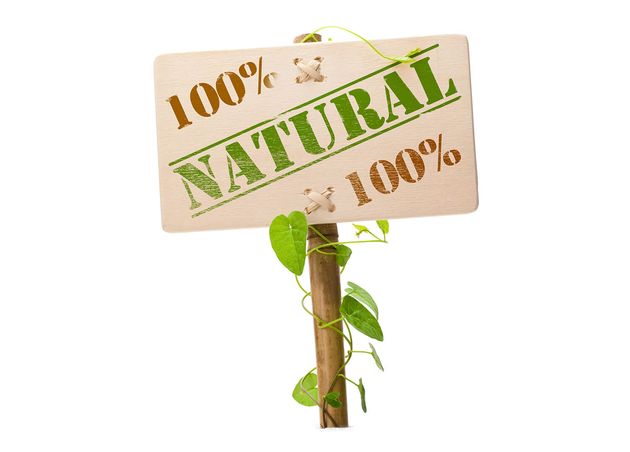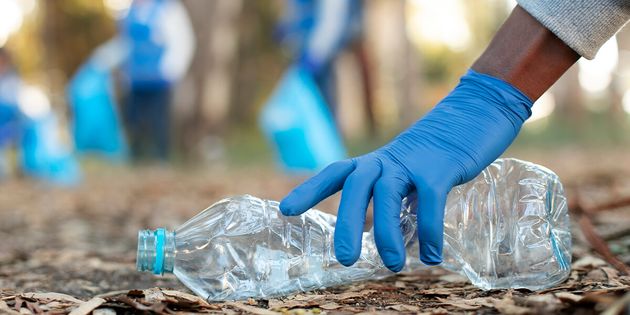Greenwashing: How to Identify and Avoid False Claims of Sustainability
Hello, my green lovers! 🌱 I welcome you to the world of greenwashing, where sustainability claims can sometimes be as elusive as a mirage in the desert.
In an era of rising environmental awareness, many companies often seize the chance to paint themselves eco-friendly champions 🌎 However, not all that glitters is green, and it becomes important to separate genuine sustainability efforts from mere marketing ploys.
So, how can we navigate through the sea of misleading claims? How to recognize and avoid the pitfalls of greenwashing? 🌱 To help you with that, join me on this journey as we can explore the realm of greenwashing and uncover the truth behind sustainability claims.
Let's dive in and unravel the mysteries that lie beneath the surface.
🌏 Eco Fact!
Did you know that the concept of "Greenwashing" was coined by environmentalist Jay Westerveld in the 1980s? Since then, Greenwashing has become a prevalent concern in the business world as consumers increasingly seek sustainable and eco-friendly options.
What is Greenwashing? And Why is it a Concern in the Realm of Sustainability?
Did you know that "Greenwashing" means the deceptive marketing or PR tactics companies employ to show themselves as environmentally friendly or sustainable? If I explain it further, companies use misleading claims, labels, or symbols to create a positive image of sustainability, often without substantial efforts or real commitment to sustainable practices 🌱
However, it is a concern in sustainability because it undermines the genuine efforts made by organizations working towards environmental responsibility 🌎 It can mislead consumers into making decisions according to false or exaggerated claims, leading to a false sense of environmental impact reduction.
Additionally, greenwashing can hinder progress toward a sustainable future by diverting attention and resources from genuine sustainability initiatives 🌱 So, consumers and stakeholders must be updated on greenwashing practices and advocate for transparency and authenticity in sustainability efforts.
🌏 Eco Trivia!
According to a study, nearly 40% of global green claims made by companies are considered potentially misleading or unsubstantiated.
What are the Common Tactics Used by Companies to Greenwash Products or Practices?
Vague or Misleading Labeling
Most commonly, numerous companies often use ambiguous terms like "green," "eco-friendly," or "natural" without providing any clear information or standards to support these claims 🌱 This method will mislead people into thinking the product is more environmentally friendly than it truly is.
Irrelevant or Exaggerated Claims
Some companies may highlight their product's minor environmental feature or benefit while avoiding its total environmental impact 🌎 It can exaggerate the importance of a single eco-friendly aspect to create a perception of sustainability without addressing the larger issues.
Cherry-Picking Data
Greenwashing can focus on positive aspects while conveniently ignoring negative environmental impacts 🌱 Companies present an incomplete image through this tactic and mislead consumers about their overall sustainability performance.
False Certifications or Labels
Some of the companies may use misleading certifications, labels, or logos that appear to indicate eco-friendliness. By the way, these certifications might be self-created or lack independent verification 🌎 So, it's better to research the credibility and standards of certifications before trusting them.
Token Gestures
Companies make small, superficial product differences and heavily market these as significant environmental improvements 🌱 While these changes might have minimal impact, they are used as a marketing tool to give the impression of sustainability.
Diverting Attention from Larger Issues
Greenwashing highlights one area where a company is making progress while diverting attention from other critical environmental issues regarding its products or operations 🌎
Green Imagery and Branding
Companies may use images of nature, plants, or green colors as branding or marketing materials to create an association with environmental friendliness 🌱 But, using such imagery alone does not guarantee the sustainability of their products or practices.
Lack of Transparency
Lack of transparency means Greenwashing often involves a lack of transparency about the environmental impact of a company's products or practices 🌎 So, when companies fail to provide detailed information, it becomes difficult for consumers to make informed selections about the environmental impact of their purchases.
Identifying Greenwashing and Spotting False Claims
As mentioned earlier, identifying greenwashing and spotting false claims can be challenging 🌎 But I am sure that consumers can navigate the deceptive practices with a critical mindset and key considerations. Most importantly, it is important to look beyond the surface-level marketing messages to identify greenwashing and spot false claims.
You can start by researching the company's environmental track record, seeking independent sources and reputable certifications. Then, take note of specific, measurable, and verifiable claims rather than vague or generalized statements 🌱 Furthermore, look for transparency and clear communication about the product's lifecycle, sourcing, and disposal. You can assess whether the company's environmental initiatives align with the broader industry standards and best practices.
In addition, be wary of excessive buzzwords and green imagery without concrete evidence or third-party validation 🌎 Furthermore, to clarify, you can consider the overall sustainability performance of the company and its practices. So, by critically evaluating these factors, any consumer can make more informed decisions and avoid falling prey to greenwashing tactics.
What are the Potential Environmental and Social Impacts of Falling for Greenwashing?
- Increased Environmental Degradation
- Wasted Resources
- Loss of Consumer Trust
- Undermined Efforts for Social Justice
- Missed Opportunities for True Sustainability
Reputable Certifications and Labels that Help Differentiate Genuine Sustainability Efforts from Greenwashing
Several reputable certifications and labels can help differentiate genuine sustainability efforts from greenwashing 🌎 They are typically awarded by independent third-party organizations with rigorous standards for evaluating environmental and social practices. Below are just a few examples:
LEED (Leadership in Energy and Environmental Design)
It is recognized worldwide as a symbol of excellence for green building practices 🌱 It assesses various aspects of a building's sustainability. This includes energy efficiency, water conservation, materials selection, and indoor environmental quality.
Energy Star
Energy Star is a famous label for energy-efficient products. Those products include appliances, electronics, lighting, and building materials 🌎 Accordingly, products with the Energy Star label truly meet strict energy efficiency criteria set by the Environmental Protection Agency (also known as EPA) in the United States.
Forest Stewardship Council (FSC)
The FSC certification guarantees that wood and wood-based products come from responsibly managed forests 🌱 It also ensures that the timber has been sourced in an environmentally sound, socially beneficial, and economically viable manner.
Fair Trade Certified
The Fair Trade Certified label is for products such as coffee, cocoa, tea, and textiles, sourced from producers who adhere to fair labor standards and receive fair prices 🌎
USDA Organic
This label is used for food and agricultural products produced without synthetic pesticides, genetically modified organisms (GMOs), or certain other harmful chemicals 🌱 It conforms with strict organic farming standards set by the United States Department of Agriculture (USDA).
B Corp Certification
This certification is awarded to businesses that meet thorough and rigorous social and environmental performance standards, accountability, and transparency 🌎
Cradle to Cradle (C2C) Certified
The C2C Certified label is for products and materials based on their environmental and social attributes 🌱 It is especially across their life cycle, including design, sourcing, manufacturing, and end-of-life considerations.
But to make sure that these certifications and labels can be useful indicators, it's essential to research and understand the criteria and standards behind each certification to ensure they align with your specific sustainability values and concerns 🌎
In addition, keep in mind that some smaller businesses or organizations may not have the resources to obtain certifications but still prioritize sustainability 🌱 In such instances, it's better to delve deeper into their practices and transparency efforts to assess their commitment to genuine sustainability.
How Can Consumers and Activists Hold Companies Accountable for their Greenwashing Practices?
- Educate Yourself and Others
- Research and Verify Claims
- Engage with Companies Directly
- Support Genuinely Sustainable Brands
- Share Your Experiences and Reviews
- Collaborate with Like-Minded Organizations
- Advocate for Stricter Regulations
- Promote Transparency and Disclosure
How Businesses and Organizations Can Avoid Greenwashing through Transparent and Genuine Practices
Businesses and organizations can adopt transparent and sustainable practices by prioritizing integrity, accountability, and holistic environmental and social responsibility 🌎 How? Well, read more about the process below:
- Firstly, they should commit to setting clear sustainability goals and targets that align with recognized standards and best practices. It will include implementing comprehensive environmental management systems to monitor and reduce their environmental impact.
- Next, they can invest in research and development to revolutionize and develop products and services that minimize environmental harm and promote sustainable lifestyles. This will promote sustainable materials, implement energy-efficient manufacturing processes, and design products for longevity and recyclability.
- Thirdly, businesses should focus on supply chain transparency, ensuring that their suppliers adhere to ethical and sustainable practices. Conducting regular audits, engaging in fair trade practices, and supporting local communities are included.
- Finally, any business can communicate transparently with consumers. It provides clear, evidence-based information about their sustainability initiatives, certifications, and progress.
In addition, this transparency builds trust, encourages informed decision-making, and eliminates the need for greenwashing, as the organization's actions speak for themselves 🌱 By integrating sustainability into their core values and operations, businesses and organizations can pave the way for a sustainable future and contribute positively to the environment and society.
Let's Shed Light on the Shadowy World of Greenwashing!
Accordingly, identifying and avoiding false claims of sustainability plays an important role in navigating the landscape of greenwashing 🌱 Consumers can protect themselves from deceptive marketing tactics by staying informed, researching certifications and labels, and critically evaluating environmental and social claims.
So, together, we can foster a culture of transparency, integrity, and genuine sustainability in the business world and positively impact the environment and society! 🌎
Eco Bear
































